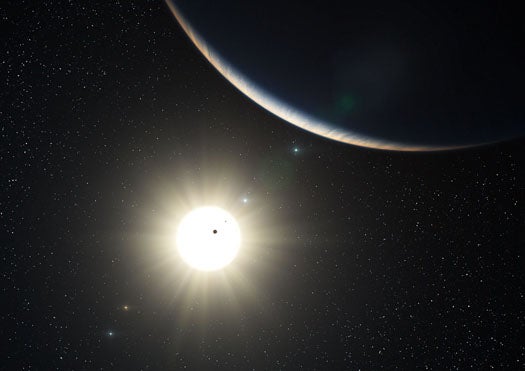ESO Spots New Planetary Group, Could Be Largest Exoplanet System Ever Seen
Spotting exoplanets is hot science in astronomy right now, and researchers at the European Southern Observatory have just made a...

Spotting exoplanets is hot science in astronomy right now, and researchers at the European Southern Observatory have just made a significant find: a planetary system some 127 light years away containing at least five Neptune like planets circling a sun much like our own.
Using the ESO’s HARPS instrument (High Accuracy Radial velocity Planet Searcher) to monitor the gravitational wobble of distant stars, the researchers noticed a star called HD 10180 whose uniquely complex wobble signals that at least five planets are rapidly orbiting the star, within a distance equivalent to the orbit of Mars.
To ice the cake, HARPS also returned to fuzzier signals that are most likely planets as well, though researchers are being careful not to label HD 10180 the largest exoplanet system ever found until they are absolutely sure they can identify either or both of those other two planets.
The five strong signals suggest planets with Neptune-like masses of between 13 and 25 Earth masses. But unlike our solar sytem, these planets are packed in tight, orbiting the star at distances between 0.06 and 1.4 times the distance between Earth and our sun. Further, one of the weaker signals indicates that an even smaller exoplanet just 1.4 Earth masses in size is orbiting HD 10180 at a distance of just 2 percent of the Earth-sun distance, meaning a full orbit — a 365-day year on Earth — takes just 1.18 Earth days.
The system is unique in several more ways. For one, its inner orbit is packed far more closely than our own solar system with at least five planets (and probably six) inside the orbit of our system’s fourth. Further, there are likely no gas giants like Jupiter circling the star. Such systems are thought to be fairly common throughout the galaxy, but how exactly they form is a mystery.
The previous record-holder for most exoplanet in a system is known as 55 Cancri, which also contained five planets (two of which are gas giants). If either or both of HD 10180’s weak signals is confirmed to be a planet, the system will become the largest exoplanetary system yet discovered.